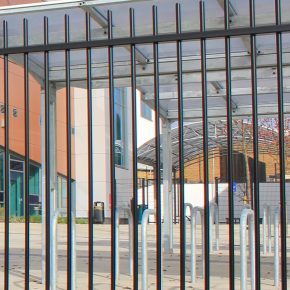
GUEST ARTICLE: Creating a secure learning environment
This guest article sees Peter Jackson, MD Jacksons Fencing, look at fencing in schools and how it could prove to be dangerous.
Children in the UK have finally returned to school following months of being mostly housebound without interaction with their peer groups. How long this will continue is anyone’s guess, as the threat of a second lockdown looms near. However, the safety of children during this time of heightened anxiety, particularly in their learning environments, remains paramount.
Providing adequate physical security is an essential requirement for any school, so decision-makers should seek guidance from reliable security solutions providers when embarking on any refurbishment process.
Importantly, these providers must possess a good knowledge of security standards from third-party bodies. However, when we commissioned an investigation into school security, which nationally surveyed teachers, architects and parents, we found less than half the architects (47%) were familiar with leading standards such as the Loss Prevention Certification Board’s (LPCB) LPS 1175. A certified LPS 1175 Security Rating is only achieved when a fence is physically tested to a standard which stipulates the allowable toolset and minimum attack time at each level.
This is alarming, especially when 84% of architects listed performance as a priority. Furthermore, only one-third of architects see both LPS 1175 and the UK police initiative Secured by Design (SBD) standards specified for schools.
This highlights a lost opportunity for them when trying to propose solutions appropriate to the level of risk and needs of the school.
Alongside commissioning professionals who have a good understanding of security standards, head teachers should also look for architects who are willing to adopt an advisory role, helping school leaders identify what they need.
For example, our research highlighted a significant percentage of teachers reporting issues with their existing school perimeter and gates. Flagging problems such as perimeter fencing being climbed over (28%) and causing injury, and gates not locking correctly (10%).
This is all the more prescient as our research discovered, during school perimeter refurbishments, 71% of architects were instructed to repeat the existing specification, rather than adjusting to meet the evolving risks.
This highlights a need for headteachers to prioritise solutions appropriate to their site’s specific needs. In many cases, this will mean changing the existing specification.
With the role of schools changing and increasingly becoming more integral to local communities, particularly in this time of uncertainty, access will be an ongoing issue.
The specification of different types of perimeters and entry systems needs to be carefully considered. Head teachers, architects and parents all need to come to a consensus to strike the right balance between known fears about unwanted persons gaining access, and ensuring children keep within the school grounds.
It was made clear by our research that there is still more to be done to ensure security measures deliver what they are put in place to do, both aesthetically and on a functional level.
Improving the understanding of security standards and knowledge of certified products available will only have a positive outcome. Our schools, students and teachers deserve adequate protection. It’s up to us all to work together to ensure it happens.
Latest news

26th July 2024
Enfield Speciality Doors completes world-class project for Atlas Copco HQ
A rundown office and warehouse building completely transformed into a modern headquarters for Atlas Copco has been fitted with more than 120 internal fire doors from Enfield Speciality Doors.
Posted in Access Control & Door Entry Systems, Articles, Building Industry News, Building Products & Structures, Building Systems, Case Studies, Doors, Interior Design & Construction, Interiors, Posts, Restoration & Refurbishment, Retrofit & Renovation, Security and Fire Protection, Sustainability & Energy Efficiency, Timber Buildings and Timber Products, Wooden products
26th July 2024
Abloy UK launches new white paper
Abloy UK, a leading provider of security and access control solutions, has launched a new white paper.
Posted in Access Control & Door Entry Systems, Architectural Ironmongery, Articles, Building Industry News, Building Products & Structures, Building Services, Doors, Facility Management & Building Services, Health & Safety, Information Technology, Innovations & New Products, Publications, Research & Materials Testing, Security and Fire Protection
26th July 2024
MCRMA Member Profile: David Roy, Director of Roofconsult
David Roy of MCRMA member company Roofconsult has more than 50 years’ experience to draw upon working in the building envelope sector and a unique perspective on how it has changed in that time.
Posted in Articles, BIM, Infrastructure & CAD Software, Building Associations & Institutes, Building Industry News, Building Products & Structures, Building Services, Building Systems, Cladding, Information Technology, Restoration & Refurbishment, Retrofit & Renovation, Roofs, Walls
26th July 2024
Strand: Enhancing Door Functionality and Safety
Craig Fox, Sales Director for Strand Hardware, outlines how door industry professionals might apply door limiting stays…
Posted in Architectural Ironmongery, Articles, Building Industry News, Building Products & Structures, Building Services, Doors, Facility Management & Building Services, Health & Safety, Restoration & Refurbishment, Retrofit & Renovation
 Sign up:
Sign up: